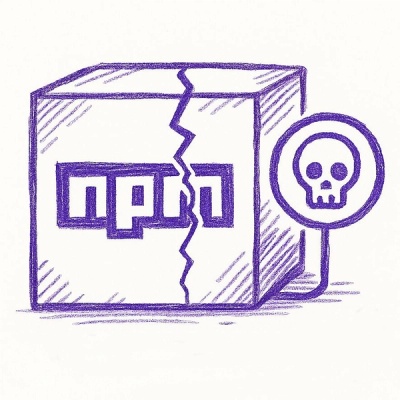
Security News
Bun 1.2.19 Adds Isolated Installs for Better Monorepo Support
Bun 1.2.19 introduces isolated installs for smoother monorepo workflows, along with performance boosts, new tooling, and key compatibility fixes.
create-graphql-server
Advanced tools
This is a simple scaffolding tool for GraphQL apps, built on MongoDB.
It consists of different commands:
create-graphql-server init project-dir
Create the basic skeleton of a GraphQL server project. If you yarn install inside project-dir, you should be able to npm start it, and then browse to http://localhost:3010/graphiql to start running queries.
There isn't anything to query yet however!
To add some types, simply run one of the following alternatives:
create-graphql-server add-type path/to/input.graphql
OR:
create-graphql-server add-type path
Where path/to/input.graphql is an input GraphQL schema (see below). Or:
Where path will add all type.graphql files in the given directory path recursively.
To see what a complete generated server looks like, see the test/output-app folder. It has been generated from the test/input schema inputs.
You create a GraphQL type for your schema by specifying the type as input, with some special code-generation controlling directives.
For example, in User.graphql:
type User {
email: String!
bio: String
tweets: [Tweet!] @hasMany(as: "author")
liked: [Tweet!] @belongsToMany
following: [User!] @belongsToMany
followers: [User!] @hasAndBelongsToMany(as: "following")
}
The above will generate a User type which is linked to other users and a tweet type via foriegn keys and which will have mutations to add, update and remove users, as well as some root queries to find a single user or all users.
The directives used control the code generation (see below).
@unmodifiable - the field will not appear in the update mutation@enum - the field's type is an enum, and can be set directly (not just by Id).If types reference each other, you should use an association directive to explain to the generator how the reference should be stored in mongo:
If the field references a single (nullable or otherwise) instance of another type, it will be either:
@belongsTo - the foreign key is stored on this type as ${fieldName}Id [this is the default]@hasOne - the foreign key is stored on the referenced type as ${typeName}Id. Provide the "as": X argument if the name is different. [NOTE: this is not yet fully implemented].If the field references an array (again w/ or w/o nullability) of another type, it will be either:
@belongsToMany - there is a list of foreign keys stored on this type as ${fieldName}Ids [this is the default]@hasMany - the foreign key is on the referenced type as ${typeName}Id. Provide the "as": X argument if the name is different. (this is the reverse of @belongsTo in a 1-many situation).@hasAndBelongsToMany - the foreign key on the referenced type as ${typeName}Ids. Provide the "as": X argument if the name is different. (this is the reverse of @belongsToMany in a many-many situation).To update types, just re-run add-type again:
create-graphql-server add-type path/to/input.graphql [--force-update]
This overwrites your old type specific files from the directories: schema, model, resolvers.
It recognizes, if you've changed any code file, which will be overwritten by the generator and stops and warns. If you are sure, you want to overwrite your changes, then just use the --force-update option.
To remove types, use the following command with the path to the GraphQL file, or as alternative, just enter the type name without path.
create-graphql-server remove-type path/to/input.graphql
create-graphql-server remove-type typename
create-graphql-server remove-type path
This command deletes your old type specific files from the directories: schema, model, resolvers. It also removes the code references out of the corresponding index files.
It recognizes, if you've changed any code file, which will be overwritten by the generator and stops and warns. If you are sure, you want to overwrite your changes, then just use the force-update option.
CGS sets up a basic passport-based JWT authentication system for your app.
NOTE: you should ensure users connect to your server through SSL.
To use it, ensure you have a GraphQL type called User in your schema, with a field email, by which users will be looked up. When creating users, ensure that a bcrypted hash database field is set. For instance, if you created your users in this way:
type User {
email: String!
bio: String
}
You could update the generated CreateUserInput input object to take a password field:
input CreateUserInput {
email: String!
password: String! # <- you need to add this line to the generated output
bio: String
}
And then update the generated User model to hash that password and store it:
import bcrypt from 'bcrypt';
// Set this as appropriate
const SALT_ROUNDS = 10;
class User {
async insert(doc) {
// We don't want to store passwords plaintext!
const { password, ...rest } = doc;
const hash = await bcrypt.hash(password, SALT_ROUNDS);
const docToInsert = Object.assign({}, rest, {
hash,
createdAt: Date.now(),
updatedAt: Date.now(),
});
// This code is unchanged.
const id = (await this.collection.insertOne(docToInsert)).insertedId;
this.pubsub.publish('userInserted', await this.findOneById(id));
return id;
}
}
To create users, simply call your generated createUser mutation (you may want to add authorization to the resolver, feel free to modify it).
To login on the client, you make a RESTful request to /login on the server, passing email and password in JSON. You'll get a JWT token back, which you should attach to the Authorization header of all GraphQL requests.
Here's some code to do just that:
const KEY = 'authToken';
let token = localStorage.getItem(KEY);
const networkInterface = createNetworkInterface(/* as usual */);
networkInterface.use([
{
applyMiddleware(req, next) {
req.options.headers = {
authorization: token ? `JWT ${token}` : null,
...req.options.headers,
};
next();
},
},
]);
// Create your client as usual and pass to a provider
const client = /*...*/
// Call this function from your login form, or wherever.
const login = async function(serverUrl, email, password) {
const response = await fetch(`${serverUrl}/login`, {
method: 'POST',
body: JSON.stringify({ email, password }),
headers: { 'Content-Type': 'application/json' },
});
const data = await response.json();
token = data.token;
localStorage.setItem(KEY, token);
}
You can run some basic code generation tests with npm test.
A simple test to check that using the test/input input files with the CGS scripts generates test/output-app can be run with npm run output-app-generation-test.
You can run a set of end-to-end tests of the user/tweet app (which lives in test/output-app) with npm run end-to-end-test. This will seed the database, and run against a running server.
The test files are in test/output-app-end-to-end.
You need to start the standard server with cd test/output-app; npm start, then run npm run end-to-end-test.
If you need to change the fixtures for the test db
Start the server, then run
mongoexport --host 127.0.0.1:3002 --db database --collection user > seeds/User.json
mongoexport --host 127.0.0.1:3002 --db database --collection tweet > seeds/Tweet.json
As this is a code generator, and not a library, once you run the code, you are on your own :)
By which I mean, you should feel free to read the generated code, understand it, and modify it as you see fit. Any updates to CGS will just affect future apps that you generate.
If you'd like to see improvements, or find any bugs, by all means report them via the issues, and send PRs. But workarounds should be always be possible simply by patching the generated code.
FAQs
Scaffolding tool for GraphQL apps
The npm package create-graphql-server receives a total of 17 weekly downloads. As such, create-graphql-server popularity was classified as not popular.
We found that create-graphql-server demonstrated a not healthy version release cadence and project activity because the last version was released a year ago. It has 3 open source maintainers collaborating on the project.
Did you know?

Socket for GitHub automatically highlights issues in each pull request and monitors the health of all your open source dependencies. Discover the contents of your packages and block harmful activity before you install or update your dependencies.

Security News
Bun 1.2.19 introduces isolated installs for smoother monorepo workflows, along with performance boosts, new tooling, and key compatibility fixes.

Security News
Popular npm packages like eslint-config-prettier were compromised after a phishing attack stole a maintainer’s token, spreading malicious updates.

Security News
/Research
A phishing attack targeted developers using a typosquatted npm domain (npnjs.com) to steal credentials via fake login pages - watch out for similar scams.